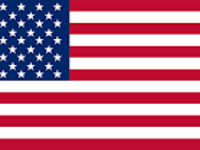10 Essential CNC Drilling Geometries Every Machinist Should Know
In CNC drilling, there are many things that have to be precise, and accuracy is the word. You could talk about aircraft components or parts for automobiles, and perhaps even intricate devices that medicate an individual. Here is an essential point: you have to select that drill geometry in order to ensure accuracy, life of the tool, and surface finish. But with so many geometries available, how does the machinist know which one would best suit a certain task?
So without much ado, here are the 10 most significant geometries when it comes to CNC drilling, which every machinist should have in his knowledge arsenal. These geometries are generally employed among different industries to craft customized machines into CNC parts, which have better performance along with perfect finishing.

1. Standard Twist Drill
The twist drill is the most common geometry and best suited for general-purpose CNC drilling. It features helical flutes which facilitate efficient removal of chips. Ideal for soft metals such as aluminum and mild steel. Though, really, this is the go-to geometry if you're just starting to get into machine work.
Use: Best for through holes and shallow depth drilling in soft-to-medium hard materials.

2. Split Point Drill
The self-centering ability of the tool is enhanced by split-tip geometry, therefore reducing walking and enhancing the precision of the hole. The tip is split at the center and thrust is thereby reduced, which is ideal for harder materials.
Use: Custom CNC machining parts are useful in applications requiring high precision, such as electronics enclosures or aerospace frames.

3. Brad Point Drill
Predominantly used for woodworking, brad-point drills have limited application under very specific conditions in soft plastics or thin sheets of metals. The essential feature of these drills is the sharp center point and the spurs preventing walking and providing clean edges.
Use: It includes drilling thin sheets or shallow holes where tear-out should be prevented.

4. Parabolic Flute Drill
The geometry is developed for deep hole CNC drilling application. The wide parabolic-shaped flute provides for quick chip removal, especially on gummy or soft materials that tend to get standard drills clogged.
Use: Deep hole drilling in aluminum and copper alloys in cooling and hydraulic components.

5. Carbide-Tipped Drill
Not exactly a geometry but a material-geometry combo, carbide-tipped drills are engineered for longevity and toughness. Their rigid design reduces deflection and maintains sharpness even under high heat.
Use: High-speed production environments or for drilling abrasive materials like composites.

6. Step Drill
Step drills feature a series of diameters along the length of the bit, enabling the creation of multiple hole sizes in one operation. They're excellent for minimizing tool changes.
Use:Electrical panels, chassis, or any custom CNC parts requiring multi-diameter holes in a single pass.

7. Center Drill
Before you start CNC drilling, a center drill is often used to create a starter point. It helps guide longer drills to prevent walking or deflection.
Use: Essential for lathe operations or whenever you're initiating a hole in a precise location.

8. Countersink Drill
A cone hole is formed for flat head screws or bolts with this geometry; the angle of the countersink could be 82°, 90°, or 100°, depending on the fastener design.
Use: Crucial for mechanical assemblies where flush-mounting of fasteners in custom CNC parts is required.

9. Gun Drill
Straight-fluted and cooled through, gun drills are ideal for making ultra-deep precision holes. Their common use includes custom CNC-part manufacturing of firearm barrels or medical instruments.
Use: Deep-hole drilling with high concentricity and surface finish requirements.

10. Spade Drill
Interchangeable inserts provide the only major part of any spade drill built with CNC drilling of large diameter holes in mind. The method is economically viable for holes larger than 1''; a spade drill can be made for different materials also.
Use: Structural steel components, pressure vessels, or other heavy-duty industrial parts.
Bonus Tip: Geometry vs. Application
With a one-geometry-fits-all notion in mind, the matching of drill geometry to material and design requirements becomes critical. For instance, a twist drill may work well in aluminum; the same might cause delamination in carbon fiber. That is where maybe diamond-coated or stepped special geometries come in.
The feed rate, spindle speed, and application of coolant also depend on geometry and material selection.
Final Thoughts
To master CNC drilling geometries is to do more than just know which tool to use. It is also to know how the choice of tooling will impact the quality, speed, and efficiency of operation. The right drill geometry, when selected, can greatly enhance the results in every stage, be it prototype or production, of custom CNC parts
So the next time you load up your CNC machine, think not just of the diameter and depth but ask yourself what is suitable geometry for the task?
Because in machining, geometry is much more than math, it's an art.


 English
English
